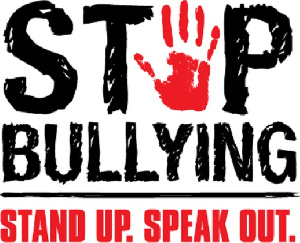Opinions of Sunday, 29 January 2017
Columnist: Eyiah Joe Kingsley
Parents! Beware of the menace of bullying at schools!!
“Bullying can affect everyone—those who are bullied, those who bully, and those who witness bullying. Bullying is linked to many negative outcomes including impacts on mental health, substance use, and suicide. It is important to talk to kids to determine whether bullying or something else is a concern.”-Stopbullying.gov
Media reports on bullying in our schools and at our workplaces are very alarming. People who are bullied can experience negative physical, school, and mental health issues. Many School Boards around the world have zero tolerance policy towards bullying. The topic is very wide but I would like to briefly discuss the menace of bullying at our schools and what parents could do about it.
What is bullying?
Bullying is considered by experts as the ways in which boys and girls act out their aggression. It usually occurs amongst younger teens and pre-teens and usually begins to fade by the later teen years. Research has shown that later primary and middle school years are the crucial years to be aware of bullying! Bullying is harmful and can lead to depression, body image issues, and low self-esteem. Both girls and boys can bully in the form of racist, sexist or homophobic remarks.
There had been situations where the bullied had taken their lives in solitary. The dangers associated with bullying are frightening and ways and means must be sought to prevent them from happening to our students both at school and at home.
Schools and bullying:
Parents expect schools to provide an environment that is emotionally and physically safe for our children. As parents, we normally feel terrified and enraged about any kind of threat to our children’s well being, especially in a place where they have to be.
According to psychologist and bullying expert Evelyn Field, bullies and targets of bullies often have undeveloped assertive communication skills. Assertive communication is the open expression of your needs, desires, thoughts and feelings. It involves speaking up for your own needs while also respecting the needs of others.
It is advised that boys and girls who are being bullied stand up to their bullies by be confident and calm in saying NO when and where necessary. They should also promptly report all acts of aggression towards them to adults. The best they can also do is not to make themselves available to the bullies.
To the bullies, I say, you can make it better! You can find a better way of expressing your needs, desires, thoughts and feelings than acting cowardly by bullying your friends and other students. Respect for others must guide all your actions!
Advice to Parents:
When possible, try to notice problems when they are small. Pay attention to changes in your child’s behaviour. Encourage children to tell you about what happens at school. Listen calmly without lecturing. Volunteer even a couple of hours a week in the classroom or school yard so that you can both help out and stay aware of potential problems at school.
The following information on bullying has been made available to parents by the Canadian Children’s Rights Council:
• Cyber bullying a relatively new phenomenon began surfacing as modern communication technologies advanced. Through email, instant messaging, Internet chat rooms, and electronic gadgets like camera cell phones, cyber bullies forward and spread hurtful images and/or messages. Bullies use this technology to harass victims at all hours, in wide circles, at warp speed.
• Emotional bullying can be more subtle and can involve isolating or excluding a child from activities (i.e., shunning the victim in the lunchroom or on school outings) or spreading rumours. This kind of bullying is especially common among girls.
• Physical bullying can accompany verbal bullying and involves things like kicking, hitting, biting, pinching, hair pulling, or threats of physical harm.
• Racist bullying preys on children through racial slurs, offensive gestures, or making jokes about a child's cultural traditions.
• Sexual bullying involves unwanted physical contact or sexually abusive or inappropriate comments.
• Verbal bullying usually involves name-calling, incessant mocking, and laughing at a child's expense.
All said and done, knowledge about bullying problems and strategies to promote healthy relationships are required in every place where children live, work, and play. We must all, students, teachers, school administrators, parents and the general public, individually and collectively, help stop bullying in schools!
By Joe Kingsley Eyiah
OCT, Brookview Middle School, Toronto-Canada
Entertainment










